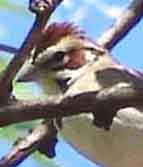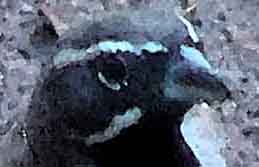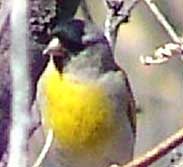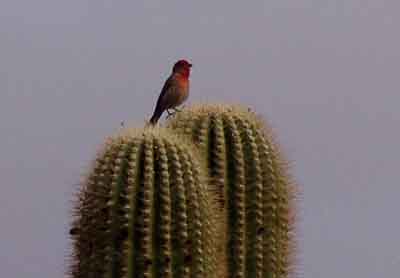Sparrows, Towhees, Finches etc.
Black-Throated Sparrow (Amphispiza bilineata)
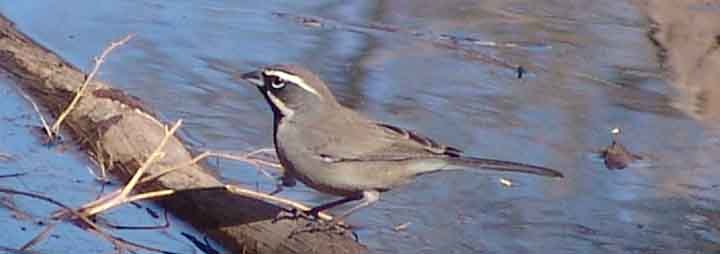
Typically seen in open, bare desert, this beautiful bird with unique facial plumage is also found along the San Pedro River. In the image above, taken in January 2006, it stands in the main pool of Jim's Willow Spring in Sierra Blanca Canyon Wash. On this particular day a flock of more than a dozen kept returning to this oasis. Below, see six of this flock as they stood near the main seep of the spring:
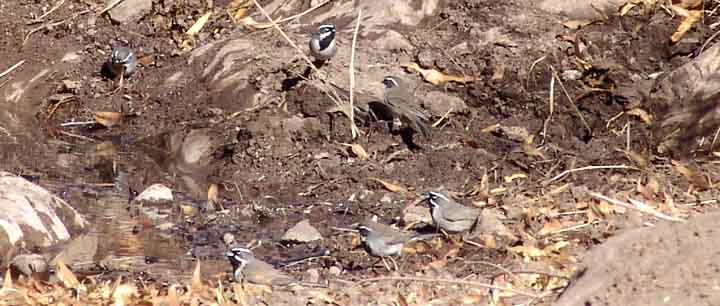
These small, rather inconspicuous birds live in our area year-round, and usually move about in flocks.
Below left, two more views of Black-throated Sparrows at Jim's Willow Spring; below right, two views seen in May 2005 near Teran Wash confluence. (Click on each image to enlarge it.)
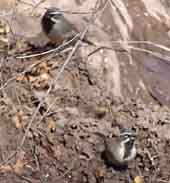
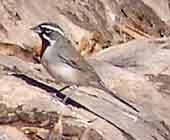
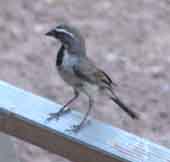
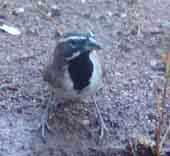
White-crowned Sparrow (Zonotrichia leucophrys)
Photographed at a pool in lower Hot Springs Canyon in February 2006. This bird winters in our area but breeds in summer further north and/or at higher altitudes.
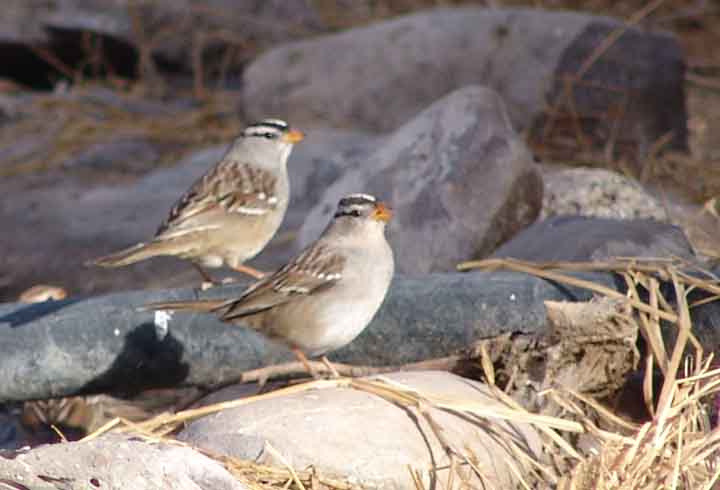
Lark Sparrow (Chondestes grammacus)
Photographed near the Teran Wash confluence with the San Pedro River in May 2006. (Click on each image to enlarge it.)
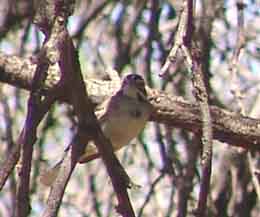 ..
..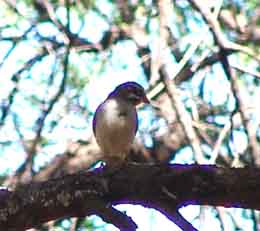 ...
...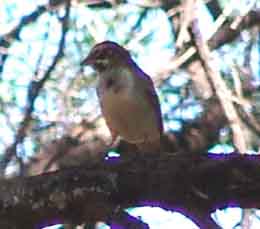
Photographed near the Teran Wash confluence with the San Pedro River in May 2006. (Click on each image to enlarge it.)
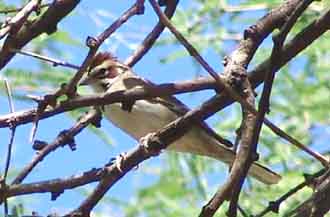
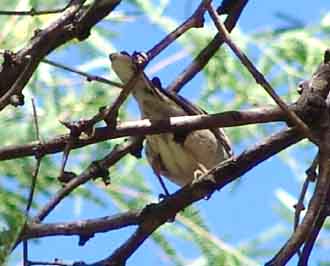
Goldfinches
Our most common Goldfinch is the Lesser Goldfinch (Carduelis psaltria). This is the smallest species of Goldfinch, and they are very active and acrobatic foragers of seeds and tree buds. Below, four views of the Male, photographed in March 2007 in Lower Hot Springs Canyon. (Click on each image to enlarge it.)
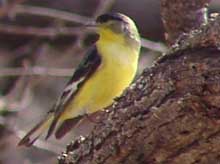 .
.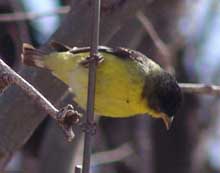 .
.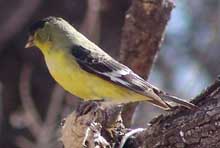 .
.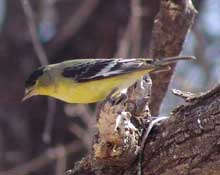
The distinctive feature of the Male Lesser Goldfinch (Western variety) is his strong black cap, evident in each of these images. The olive-color of the back also distinguishes this bird from the Texas variety. The whitish wing bars are characteristic of the whole species. (Note also that the tail has white patches.)
Below, female Lesser Goldfinches photographed at the same location. They differ from the males in having paler coloration and lack the black cap, showing olive coloring at the top of the head. (Click on each image to enlarge it.)
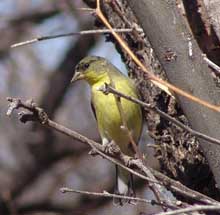 .
.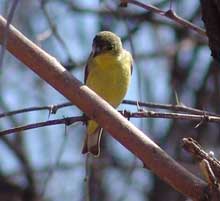 .
.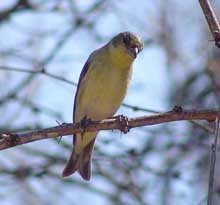 .
.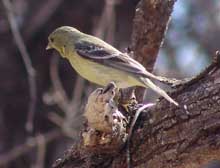
Much less common in our area is Lawrence's Goldfinch (Carduelis lawrencei), shown below near the Hot Springs Canyon Windmill in March 2007: (Click on each image to enlarge it.)
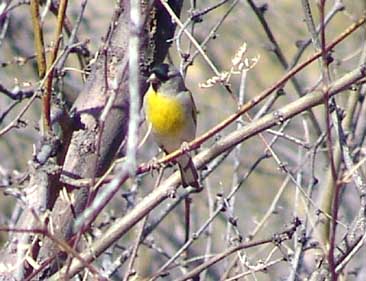 ..
..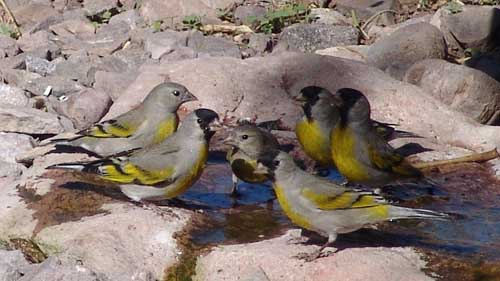
Above left, a male Lawrence's, showing the black face mask that clearly distinguishes it from the Lesser (these are also larger goldfinches than the Lesser). Above right, females are at left and center, their gray heads setting them off from the males, while all Lawrence's have the pale gray bodies and strong yellows on their wings. Lawrence's winter in southern Arizona and adjacent Sonora, but summer in California.
House Finch (Carpodacus mexicanus)
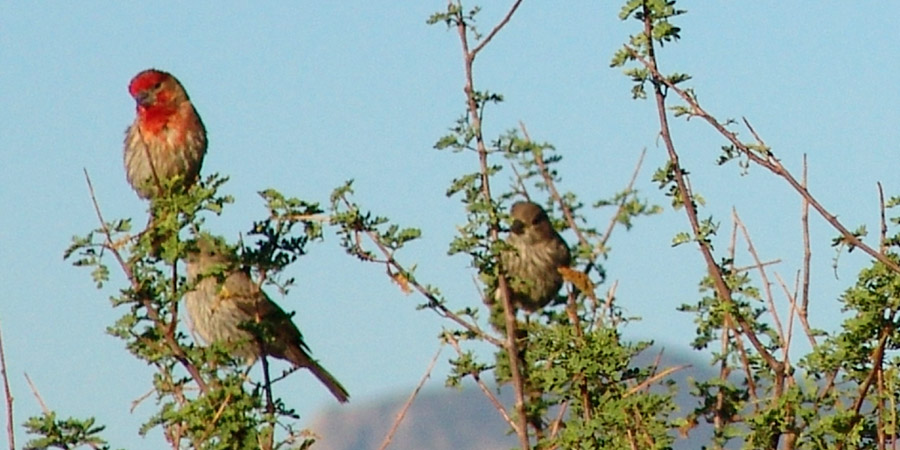
Above, a family gathering in lower Hot Springs Canyon, May 21, 2008. Below, this male displayed his wares at the same location December 14, 2006:
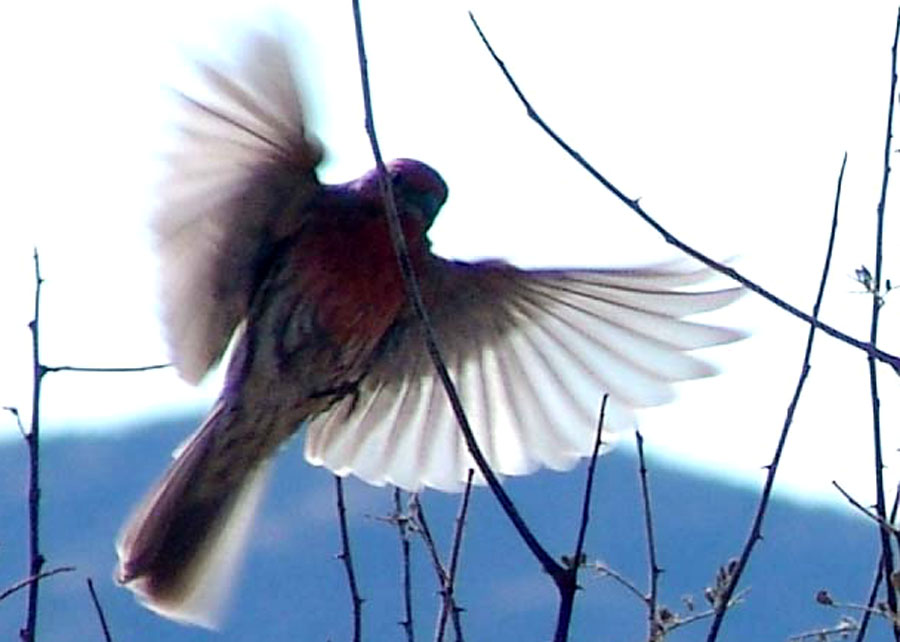
Common in our area, these birds below were taking advantage of Jim's Willow Spring in January 2006.
(Click on each image to enlarge it.)
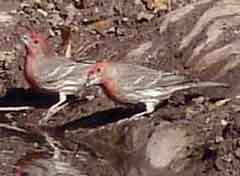
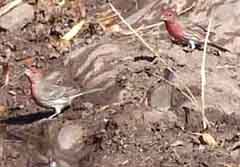
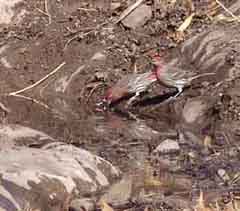
This one at left was singing, perched atop the Rabbit Ears Saguaro at sundown in late March 2006.
(Click on the image to enlarge it.)
Canyon Towhee (Pipilo fuscus)
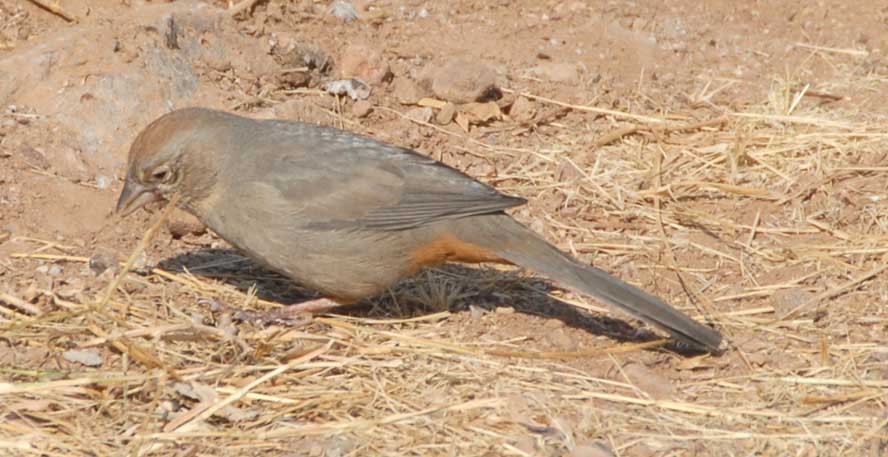
This bird (above, photographed in November 2007 in lower Hot Springs Canyon) is common in our area year-round. Towhees live in dense brush but often forage on nearby open ground (in summer for insects, in winter for seeds).
Two other Towhee species share the bright reddish color of undertail coverts and vent evident in the image above. Distinctive features of the Canyon Towhee include its gray overall color contrasting with a reddish crown, a pale eye-ring, and usually an obvious dark central spot on the breast. The image below left shows a bird with a cluster of three dark breast spots, while the central and right-hand images show the eye-ring (and the latter the central spot). The bird at far right was photographed in January of 2000; the other images are all of the same November 2007 bird. (Click on each image to enlarge it.)
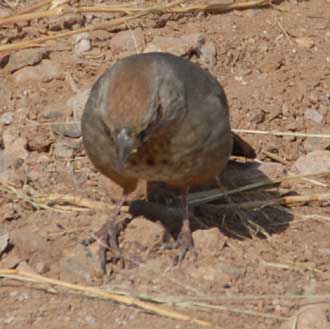
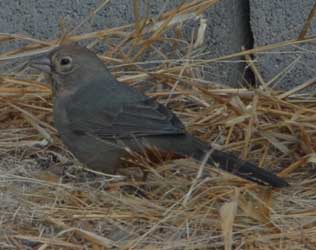
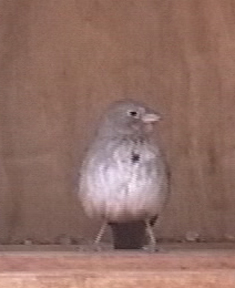
One other feature noted by Sibley (2000, p. 476) is the presence of "a "distinct 'necklace' of dark spots" above the breast spotting of this bird. These are evident in the image above right, and also faintly evident in our November 2007 bird, below, indicated by the red arrow.
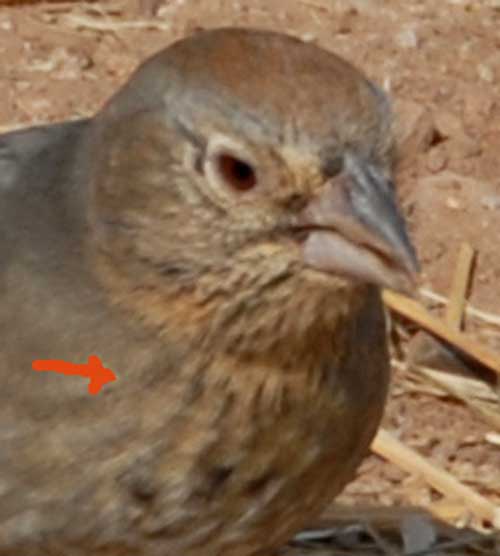
Abert's Towhee (Pipilo aberti)
We saw this bird below at a pool in lower Hot Springs Canyon on the morning of May 30, 2008. We identify this bird as Abert's based on its dark face mask (visible in all three images), the paleness of the beak and reddish rump (these best seen in the left-hand image), and the paleness of the breast. (Click on each image to enlarge it.)
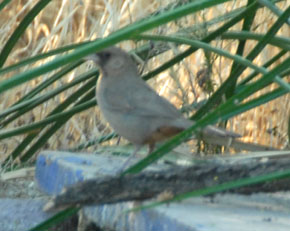 .
.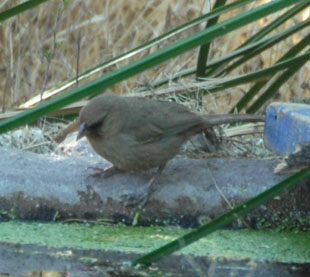 .
.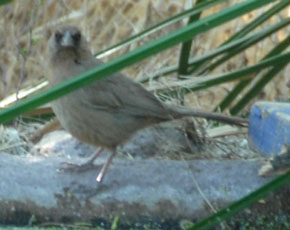
Return to Birds
